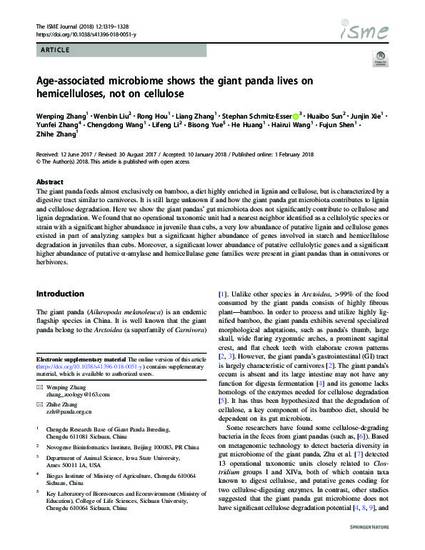
The giant panda feeds almost exclusively on bamboo, a diet highly enriched in lignin and cellulose, but is characterized by a digestive tract similar to carnivores. It is still large unknown if and how the giant panda gut microbiota contributes to lignin and cellulose degradation. Here we show the giant pandas’ gut microbiota does not significantly contribute to cellulose and lignin degradation. We found that no operational taxonomic unit had a nearest neighbor identified as a cellulolytic species or strain with a significant higher abundance in juvenile than cubs, a very low abundance of putative lignin and cellulose genes existed in part of analyzing samples but a significant higher abundance of genes involved in starch and hemicellulose degradation in juveniles than cubs. Moreover, a significant lower abundance of putative cellulolytic genes and a significant higher abundance of putative α-amylase and hemicellulase gene families were present in giant pandas than in omnivores or herbivores.
Available at: http://works.bepress.com/stephan-schmitz-esser/34/

This article is published as Zhang, Wenping, Wenbin Liu, Rong Hou, Liang Zhang, Stephan Schmitz-Esser, Huaibo Sun, Junjin Xie et al. "Age-associated microbiome shows the giant panda lives on hemicelluloses, not on cellulose." The ISME journal 12, no. 5 (2018): 1319. doi: 10.1038/s41396-018-0051-y.